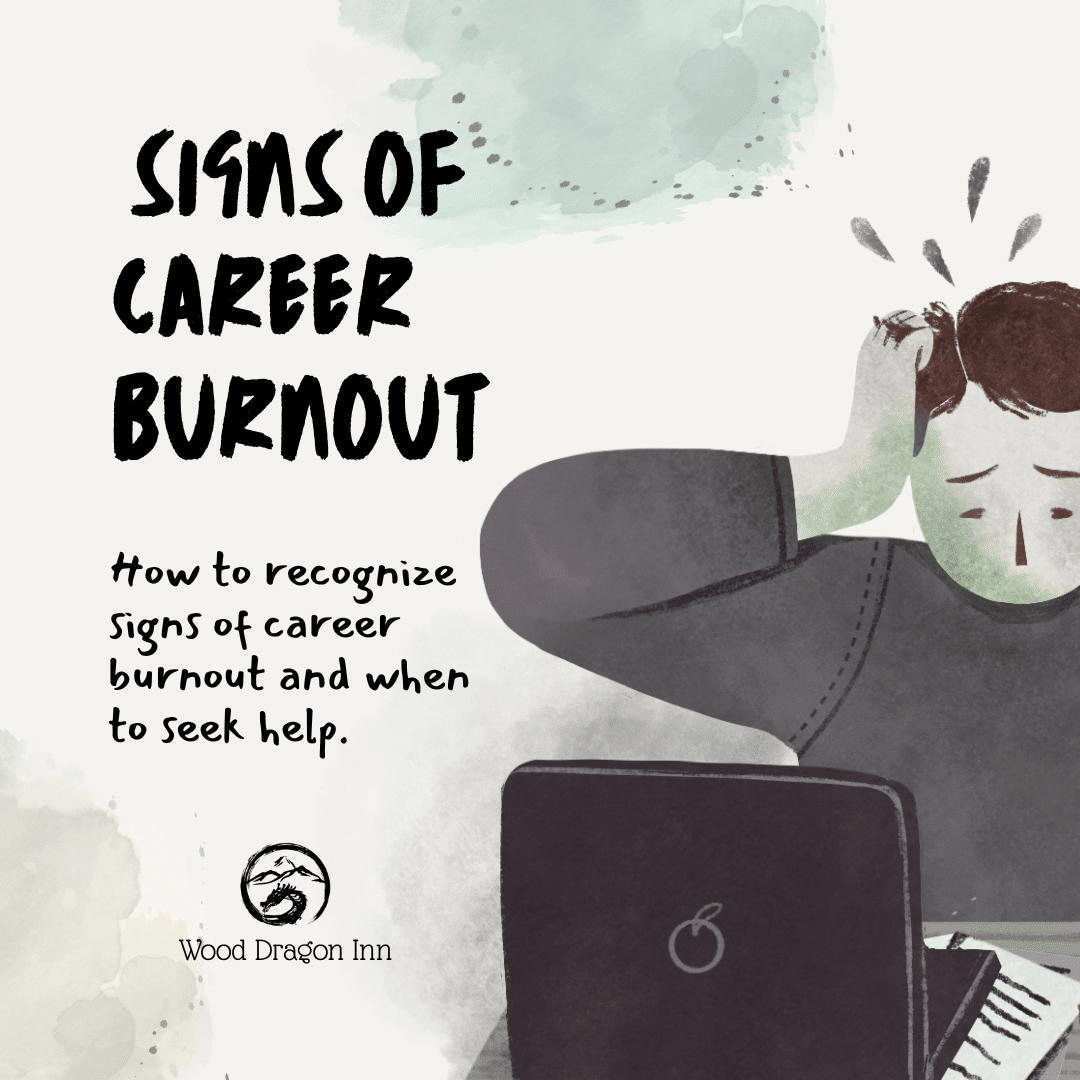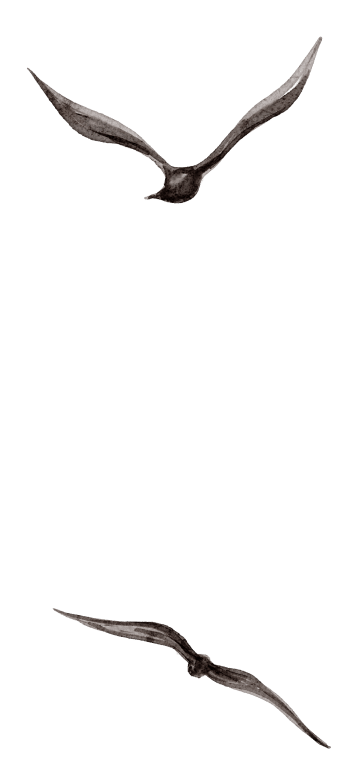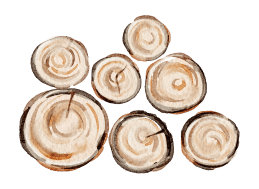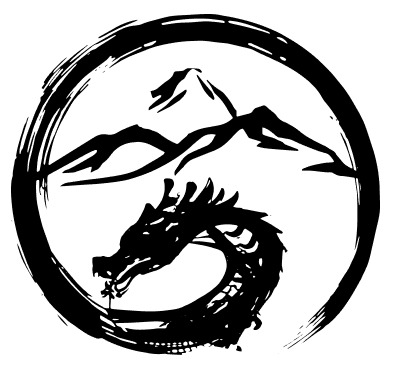In today’s high-pressure professional landscape, career burnout has become a significant mental health concern affecting executives, managers, and employees across all industries. At Mental Health Residential at the Wood Dragon, we understand that professional burnout syndrome is more than just feeling tired or stressed—it’s a complex condition with far-reaching implications for your mental health, physical well-being, and overall quality of life.
Located in the serene mountains of Idyllwild, California, our residential mental health treatment center offers a natural sanctuary where professionals can step away from the demands of career obligations to focus on healing and self-cultivation. This comprehensive guide explores career burnout symptoms, its impact on mental health, and how our unique treatment approaches can help you transform burnout into renewed purpose and resilience.

Understanding Career Burnout: More Than Just Stress
Career burnout differs from everyday work stress in both intensity and duration. While stress typically presents as a response to immediate pressures with the expectation of eventual relief, burnout develops gradually when chronic workplace stress remains unmanaged. The World Health Organization recognizes burnout as an “occupational phenomenon” characterized by three dimensions:
- Feelings of energy depletion or exhaustion
- Increased mental distance from one’s job, or feelings of negativism or cynicism related to one’s job
- Reduced professional efficacy
Professional burnout syndrome typically emerges after prolonged exposure to workplace stressors without adequate recovery periods or effective coping mechanisms. At Mental Health Residential at the Wood Dragon, we recognize burnout as not a personal failure but a natural response to unsustainable demands and conditions.
Mental Health Symptoms of Career Burnout
Burnout manifests through various mental health symptoms that can significantly impair your professional performance and personal well-being. Recognizing these symptoms early is crucial for preventing further deterioration of your mental health.
1. Emotional Exhaustion
Emotional exhaustion—perhaps the most recognizable symptom of burnout—goes beyond physical tiredness. It involves:
- Feeling drained and depleted of emotional resources
- Persistent fatigue that doesn’t improve with rest
- Reduced capacity to manage emotions in the workplace
- A sense of emotional numbness or detachment
- Decreased tolerance for workplace stressors
This emotional depletion can make even small workplace challenges feel insurmountable, creating a cycle where everyday tasks become increasingly difficult.
2. Persistent Anxiety
Professional burnout often manifests as heightened anxiety that extends beyond typical workplace concerns:
- Excessive worry about work performance and outcomes
- Physical symptoms include increased heart rate, shallow breathing, and muscle tension
- Racing thoughts, especially at night, disrupting sleep
- Anticipatory anxiety about upcoming workdays or meetings
- Difficulty concentrating due to anxious rumination
This persistent anxiety can create a feedback loop where worrying about work performance impairs your ability to perform effectively.
3. Depression and Mood Disturbances
As burnout progresses, it can trigger or exacerbate depressive symptoms:
- Persistent feelings of sadness, emptiness, or hopelessness
- Loss of interest or pleasure in previously enjoyable activities
- Feelings of worthlessness or inappropriate guilt related to work performance
- Significant changes in appetite and weight
- Increased irritability and low frustration tolerance
These mood disturbances often extend beyond the workplace, affecting personal relationships and overall quality of life.
4. Cognitive Impairment
Burnout significantly impacts cognitive function, often in ways that directly affect job performance:
- Difficulty concentrating or maintaining focus
- Impaired decision-making capabilities
- Reduced creativity and problem-solving abilities
- Memory problems or forgetfulness
- Mental fog or confusion
These cognitive symptoms can create a distressing cycle where decreased performance increases stress, further impairing cognitive function.
5. Detachment and Cynicism
Professional burnout syndrome frequently manifests as psychological detachment from work:
- Emotional distancing from colleagues and clients
- Cynical or negative attitudes toward workplace initiatives
- Decreased empathy and compassion
- Loss of meaning or purpose in work
- Questioning the value of your contributions or profession
This detachment serves as a psychological defense mechanism but ultimately leads to further disengagement and dissatisfaction.
Physical Manifestations of Career Burnout

Mental health symptoms of burnout often manifest physically, highlighting the profound connection between mind and body:
1. Sleep Disturbances
- Difficulty falling asleep despite physical exhaustion
- Early morning awakening with inability to return to sleep
- Unrefreshing sleep despite adequate duration
- Sleep disrupted by work-related dreams or thoughts
These sleep issues further compound fatigue and cognitive impairment, creating a vicious cycle.
2. Psychosomatic Symptoms
- Tension headaches and migraines
- Gastrointestinal issues, including stomach pain, nausea, or digestive disturbances
- Compromised immune function leading to frequent illness
- Cardiovascular symptoms, including elevated blood pressure
- Chronic pain without clear physical cause
Many professionals seek medical treatment for these physical symptoms without recognizing their connection to workplace burnout.
3. Changes in Health Behaviors
Burnout often leads to changes in health-related behaviors:
- Increased reliance on caffeine, alcohol, or other substances to manage stress
- Changes in eating patterns—either skipping meals or emotional overeating
- Reduced physical activity due to exhaustion
- Neglect of preventive healthcare and self-care practices
- Abandonment of previously enjoyed wellness activities
These behavioral changes further compromise physical health and emotional resilience.
The Impact of Untreated Professional Burnout
When career burnout symptoms go unaddressed, the consequences can extend far beyond the workplace:

1. Professional Consequences
- Decreased productivity and performance
- Increased errors and lapses in judgment
- Strained workplace relationships
- Career stagnation or regression
- Increased risk of job loss or career change
2. Personal Life Disruption
- Strained personal relationships and increased conflict
- Withdrawal from social activities and connections
- Diminished presence and engagement with family
- Loss of hobbies and non-work interests
- Identity crisis when work identity has been predominant
3. Long-term Health Risks
- Increased risk of cardiovascular disease
- Higher vulnerability to substance use disorders
- Development of chronic anxiety or depressive disorders
- Compromised immune function
- Potential for long-term disability related to mental health
These potential outcomes underscore the importance of addressing burnout symptoms early through comprehensive treatment.
Unique Factors Contributing to Executive Burnout
While burnout can affect professionals at all levels, executives and high-level managers often face unique contributing factors:

1. Isolation in Leadership
Senior leaders frequently lack safe spaces to express doubts, concerns, or struggles, creating emotional isolation despite being surrounded by people.
2. Responsibility Without Control
Executives often bear ultimate responsibility for outcomes while lacking complete control over all variables and dependencies.
3. Decision Fatigue
The constant demand for complex decision-making depletes mental resources, mainly when decisions involve competing priorities or ethical dilemmas.
4. Identity Fusion
Many executives experience a merging of personal and professional identity, making workplace setbacks feel like personal failures.
5. Always-On Expectations
Digital connectivity creates expectations of 24/7 availability and immediate response, preventing cognitive and emotional recovery.
At Mental Health Residential at the Wood Dragon, we understand these unique stressors and provide customized treatment approaches specifically designed for executives and high-level professionals.
Mental Health Residential at the Wood Dragon’s Holistic Approach to Executive Burnout Treatment

Nestled in the peaceful mountains of Idyllwild, California, Mental Health Residential at the Wood Dragon offers a sanctuary for professionals experiencing burnout. Our approach integrates evidence-based Western treatments with Eastern healing traditions, addressing burnout at its root rather than merely alleviating symptoms. This integration of modalities ensures a comprehensive treatment approach that addresses the multifaceted nature of professional burnout syndrome.
1. Acupuncture for Mental Health
Our licensed acupuncturists use this ancient practice to help restore balance to your body’s energy systems:
- Reduces stress hormones and activates the parasympathetic nervous system
- Addresses specific symptom patterns related to burnout
- Improves sleep quality and duration
- Alleviates physical manifestations, including headaches and digestive issues
- Supports emotional regulation and reduces anxiety
Many clients report significant relief from burnout symptoms after integrating regular acupuncture into their recovery process.
2. Qi Gong and Tai Chi
These traditional Chinese practices help restore the natural flow of energy throughout the body:
Tai Chi Practice:
- Cultivates mindful awareness through gentle movQi Gong Modalitiesement
- Reduces stress hormones and inflammationQi Gong Modalities
- Improves cognitive function and mental clarity
- Enhances body awareness and embodiment
- Provides accessible meditation for restless minds
These practices offer particularly valuable tools for executives who find traditional seated meditation challenging.
3. Evidence-Based Therapies
Our treatment program incorporates clinically validated therapies specifically selected for their effectiveness in addressing burnout and its underlying causes:
Psychotherapy:
- Cognitive Behavioral Therapy to identify and modify unhelpful thought patterns related to work and achievement
- Solution-focused approaches to develop practical strategies for workplace challenges
- Narrative therapy to reframe the burnout experience and reconnect with core values
- Group therapy provides validation and perspective from peers experiencing similar challenges
- Interpersonal therapy addressing how burnout affects and is affected by relationships
EMDR (Eye Movement Desensitization and Reprocessing):
- Processes traumatic or distressing work experiences that contribute to burnout
- Reduces emotional reactivity to workplace triggers
- Addresses performance anxiety and imposter syndrome
- Resolves “emotional flashpoints” that may have initiateda burnout cycle
- Integrates fractured aspects of professional identity after burnout
Trauma-Informed Care:
- Recognition of how past trauma influences current stress responses
- Attention to creating safety in the therapeutic relationship
- Emphasis on choice and autonomy throughout the treatment process
- Focus on strengths and resilience rather than pathology
- Integration of somatic approaches to address trauma stored in the body
4. Medication Management with Autonomy
We believe in empowering clients through collaborative medication decisions:
- Comprehensive evaluation by experienced psychiatrists
- Education about medication options, benefits, and limitations
- Collaborative decision-making that honors your preferences
- Regular reassessment and adjustment as needed
- Integration of medication with complementary approaches for optimal outcomes
Our approach ensures that medication, when appropriate, serves as a tool for recovery rather than a stand-alone solution.
5. Environmental Healing & Hiking: Nature as Medicine
The Mental Health Residential at the Wood Dragon’s location in Idyllwild provides unique healing opportunities that are central to our treatment program:
- Guided Therapeutic Hiking on our network of private trails and nearby San Jacinto mountain paths, carefully selected to match your physical ability and treatment goals
- Forest Immersion Therapy sessions led by trained staff to help you reconnect with nature’s healing rhythms and reduce stress hormones and blood pressure
- Mountain Trail Meditation combines physical movement with mindfulness practice to quiet the overactive mind
- Panoramic Vista Points offering breathtaking views that naturally inspire perspective shifts and renewed clarity about life priorities
- Seasonal Nature Experiences, including wildflower blooms, autumn foliage, and star-gazing opportunities that reconnect you with natural cycles and time outside the workplace calendar
- Clean mountain air and abundant natural light work in concert to reset disrupted sleep cycles and improve mood
Our structured hiking program is a cornerstone of executive burnout treatment, offering physical exercise and opportunities for profound psychological insight and emotional release. Many clients report breakthrough moments occurring during these guided nature experiences, away from the confines of traditional therapy settings.
Research consistently demonstrates nature’s powerful effect on reducing burnout symptoms and restoring cognitive resources. Studies show that even short periods of immersion in natural settings significantly decrease cortisol levels, improve mental function, and enhance creative problem-solving—all crucial elements in burnout recovery.
Signs It’s Time to Seek Professional Help for Burnout

While occasional stress is everyday, certain warning signs indicate the need for professional intervention:
- Burnout symptoms persist despite attempts at self-care and workplace adjustments
- Stress-related symptoms are compromising physical health
- Sleep disturbances have become chronic and significant
- You’re experiencing thoughts of self-harm or hopelessness
- Work performance has significantly declined despite increased effort
- You’re using substances to manage work stress
- Personal relationships are suffering due to emotional depletion or irritability
- You feel trapped with no way to improve your situation
At Mental Health Residential at the Wood Dragon, we provide comprehensive assessments to determine the severity of burnout and create personalized recovery plans.
The Process of Burnout Recovery at Mental Health Residential at the Wood Dragon
Recovery from professional burnout syndrome isn’t about quick fixes—it’s about sustainable transformation:
1. Assessment and Understanding
Treatment begins with a comprehensive evaluation to understand your unique burnout pattern, contributing factors, and individual needs.
2. Immediate Stabilization
Initial interventions focus on reducing acute symptoms through stress reduction techniques, improving sleep, and addressing medical concerns.
3. Root Cause Exploration
We help you identify the personal, organizational, and cultural factors contributing to your burnout experience.
4. Skill Development
You’ll learn practical tools for managing stress, setting boundaries, practicing self-compassion, and cultivating resilience.
5. Identity Recalibration
Many executives need to rebuild an identity that encompasses but isn’t limited to professional achievement.
6. Sustainable Planning
Before completing residential treatment, you’ll develop a concrete plan for maintaining well-being while re-engaging with professional responsibilities.
Insurance Coverage for Executive Burnout Treatment
Many professionals are surprised that most major insurance providers cover comprehensive burnout treatment at Mental Health Residential at the Wood Dragon. As burnout becomes increasingly recognized as a significant health concern, insurance companies have expanded coverage for residential mental health treatment addressing this condition.
Our experienced admissions team works directly with your insurance provider to verify coverage and explain benefits, making the process as seamless as possible during this challenging time.
It’s Not Just Okay to Take a Break—It’s Essential

In our achievement-oriented culture, many professionals view taking time for mental health as a luxury they can’t afford or a sign of weakness they shouldn’t display. This perspective couldn’t be further from the truth.
The most successful and sustainable careers are built on foundations of well-being, balance, and self-awareness. Taking time to address burnout isn’t stepping away from success—it’s investing in your most valuable professional asset: yourself.
Just as athletes understand the necessity of recovery periods for peak performance, visionary professionals recognize that mental recovery isn’t optional—it’s essential for sustained excellence. By addressing burnout comprehensively, you demonstrate wisdom, self-leadership, and commitment to bringing your best self to everything you do.
At Mental Health Residential at the Wood Dragon, we’ve witnessed countless executives transform their burnout experience into a catalyst for more authentic leadership, improved work-life integration, and renewed purpose. Your burnout recovery journey doesn’t just restore previous functioning—it often leads to newfound clarity and more meaningful engagement with your work and life.
Take the First Step Toward Transformation

If you’re experiencing career burnout or professional burnout syndrome symptoms, we invite you to contact Mental Health Residential at the Wood Dragon. Our admissions team can answer your questions about our executive burnout treatment program and help you understand how our unique approach might benefit your situation.
Surrounded by the healing presence of nature in Idyllwild’s mountain landscape, you’ll find the space, support, and expertise needed to transform burnout into renewed purpose and resilience. Contact us today to learn more about how our insurance-covered mental health retreat-style experiences can help you recover from burnout and cultivate a more sustainable relationship with your professional life.
Remember: The strongest professionals aren’t those who never experience burnout—they recognize when it’s time to seek support and take decisive action to restore their well-being. Your journey to recovery begins with a single step.
References
Batanda, I. Prevalence of burnout among healthcare professionals: a survey at fort portal regional referral hospital. npj Mental Health Res 3, 16 (2024). https://doi.org/10.1038/s44184-024-00061-2
Edú-Valsania, S., Laguía, A., & Moriano, J. A. (2022). Burnout: A Review of Theory and Measurement. International journal of environmental research and public health, 19(3), 1780. https://doi.org/10.3390/ijerph19031780
Bianchi, R., & Schonfeld, I. S. (2023). Examining the evidence base for burnout. Bulletin of the World Health Organization, 101(11), 743–745. https://doi.org/10.2471/BLT.23.289996
Maslach, C., & Leiter, M. P. (2016). Understanding the burnout experience: Recent research and its implications for psychiatry. World Psychiatry, 15(2), 103-111. https://www.sciencedirect.com/topics/nursing-and-health-professions/emotional-exhaustion
Tatayeva, R., Ossadchaya, E., Sarculova, S., Sembayeva, Z., & Koigeldinova, S. (2022). Psychosomatic Aspects of The Development of Comorbid Pathology: A Review. Medical journal of the Islamic Republic of Iran, 36, 152. https://doi.org/10.47176/mjiri.36.152
Pignatiello, G. A., Martin, R. J., & Hickman, R. L., Jr (2020). Decision fatigue: A conceptual analysis. Journal of health psychology, 25(1), 123–135. https://doi.org/10.1177/1359105318763510









